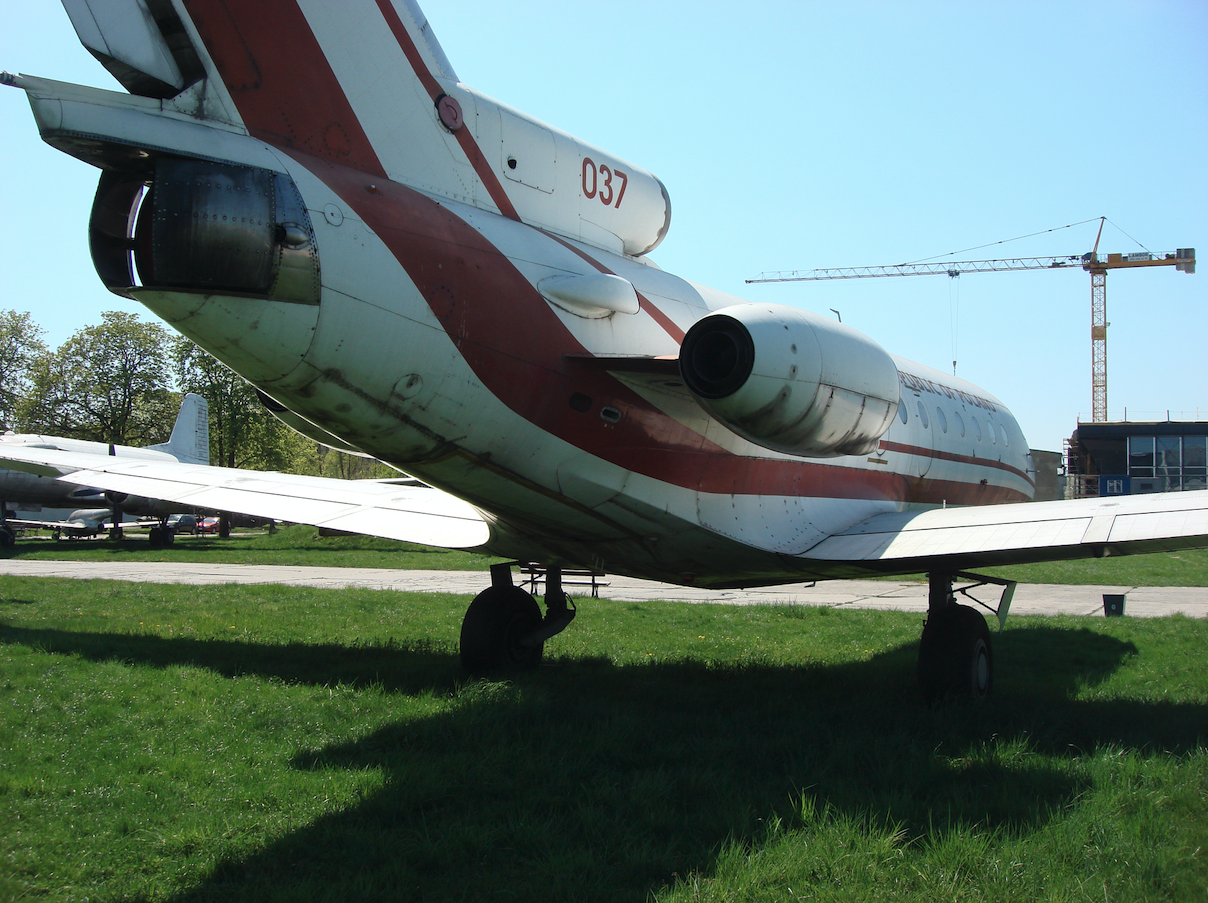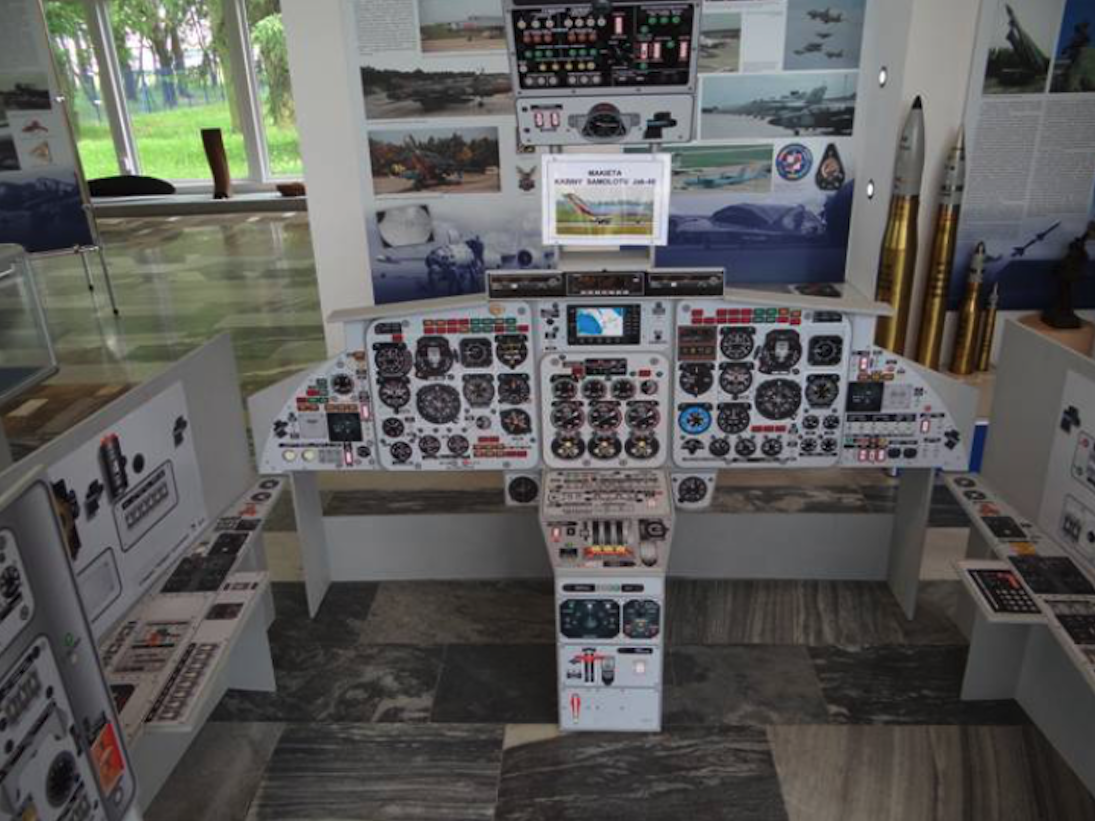Kraków 2011-10-30
History
OKB Jakowlew Jak-40.
Construction
A passenger plane, in Poland, intended for the transport of important personalities, within the borders of the Republic of Poland and Europe. Short and medium range. The airframe is a cantilever low-wing, all-metal structure.
Straight wings. Three-spar construction, with ribs and smooth covering. Stiffened with stringers. Chemical etched cover, thanks to which its thickness decreases with the wingspan. Spot welded and riveted cover. Rivet heads countersunk. The leading edge of the wings is de-iced with hot air. On the run-off there are three-segment Fowler flaps (widened), tilted 20 degrees at take-off and 35 degrees for landing. The flaps are hydraulically operated. Two-section ailerons. There is a trim tab on the right inner aileron. Fuel tanks located in the space between the girders.
Aircraft fuselage with a circular cross-section and a diameter of 2.4 m. Half-shell structure. The covering is spot-welded to the stringers, and riveted and glued to the rebates. The laminate bow covers the weather station antenna and the ILS antenna. The crew cabin is designed for three pilots. There is an emergency exit in the pilot’s cabin ceiling. The passenger compartment is 7.07 m long. It is usually divided into two parts. In the front there is a luxurious compartment with a couch for three people, two movable and fold-out armchairs, a large table and a cabinet-bar. The rear compartment is equipped with classic airplane seats. Maximum 14-17 seats. One-cabin layout can accommodate up to 32 passengers. There is also a dressing room and a toilet on board. The passenger section has 8 windows on each side. Window No. 8 on the right and window No. 7 on the left are emergency exits. The crew and passenger cabins are hermetic and air-conditioned. The main entrance to the aircraft is located in the tail section. This is the same solution as that used in the French Caravell passenger plane. In the lower part there is a hatch with fixed stairs, lowered hydraulically. It has dimensions of 1.74 m x 0.94 m. Behind the hatch there is a wall equipped with a classic door.
"T" tail. Divided into rudders and ballasts. Vertical oblique, horizontal straight. The horizontal limb is of the floating type. Its wedge angle can be varied in flight from –6 degrees to +3 degrees. The elevator has an electrically operated balancing flap.
Written by Karol Placha Hetman



